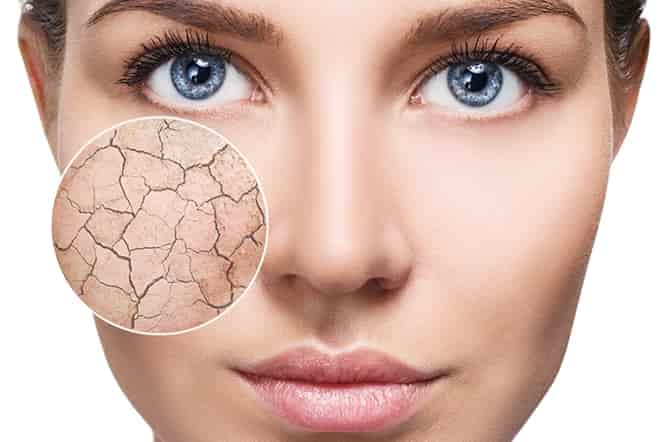Beauty:
Dehydration: Are you mistaking dehydration lines for wrinkles?
Beauty:
10 Feb 2020

While it sometimes feels that way, wrinkles don’t just form overnight. They’re caused by factors that include a gradual loss of collagen, thinning skin and repeated movements that gradually form an entrenched line. You’re not going to go to bed line-free and then waking up with a permanent frown. Dehydration, however, is a different story!
Tell me more about dehydration
Still, if your skin isn’t hydrated enough, you might notice very fine, crepey lines that seem to come and go. In this case, you’re dealing with dehydration lines. Unlike wrinkles, they’re not permanent and a well-formulated face cream might be all you need to get rid of them.
Obviously ensuring you’re drinking enough water is always a good thing, but it’s not enough to rehydrate your face. When you down that litre of water, the first place it’s going to go is your body’s cells before flushing out via your kidneys. Dry skin is an external problem that requires topical treatment.
Dehydration, why me?
Some people will have a dryer skin type than others and for that, they can thank their parents. Your genes play a role in how your oil-producing sebaceous glands function. Still, oily-skinned people can also suffer from dehydrated skin. Things like over-cleansing, over-exfoliating and unwittingly using products with drying ingredients (hello, alcohol-heavy toner!) all contribute to parched skin. If you’re very dry, however, you might be dealing with an impaired barrier function. This is something that can affect all skin types.
The upper layers of your skin have a big job. They’re there to keep irritants out and moisture in. This can easily become disrupted, be it due to using a harsh exfoliator or products that contain too much fragrance. The result is dryness, redness and even allergic reactions. Also, you’ll lose your skin’s waxy lipid layer that acts as a sealant. Moisture will escape and dehydration lines will become apparent. Also, if you apply moisturisers that don’t help repair your barrier function first, your newfound hydration will escape soon after it’s applied.
Replenish at home
Dealing with stock standard dehydration? A well-formulated hydrator is all you need to make those fine, dehydration lines disappear. Phew! It’s a myth that a moisturiser has to be heavy, thick or balm-like to treat very dry skin. One of the most effective hydrators around is hyaluronic acid. It’s often the star ingredient of wonderfully weightless serums that literally feel like water. It has the ability to attract and hold up to 1000 times its weight in water, so it does a brilliant job of plumping up your skin from the inside out.
If, however, you’re suffering from a disrupted barrier function, you’re going to have to fix that first. This means laying off harsh, drying products so your skin’s damaged outer layer can renew itself. You’ll want to use products containing ingredients that mimic your skin’s natural lipids to restore that waxy outer layer. A top pick would be any hydrator from Lamelle’s Serra range. It makes use of Ceramide P, a 100-percent replica of your body’s own natural ceramides.
In-office solutions for dehydration
There are lots of in-office treatments that can help you look plump and radiant. One is transdermal mesotherapy. This involves applying a hydrating serum and using a device that emits gentle electrical pulses to push it into the deepest layers of your skin. Don’t worry, it doesn’t hurt at all. Most people would describe the experience as rather soothing. Afterwards, you’ll walk out with glowing skin.
Another way to get hydration into the deeper layers of your skin is to inject it there. A Magic Needle Mesolift involves using a special needle to disperse a rejuvenating “magic mix” just below the surface of your skin. The star ingredient is a hyaluronic acid-based filler to instantly plump. It also contains a blend of active ingredients that encourage your skin to produce more of its own collagen, elastin and hyaluronic acid. It’s a great solution to fine lines and crepey skin and, better yet, the results can last up 18 months!
What’s the verdict?
In short, if you’re struggling with dehydration lines, there’s a lot you can do to get rid of them. You just have to choose the right products and opt for treatments proven to rehydrate and plump. Any highly-skilled therapist or aesthetic doctor will be able to help you choose those would suit you best.

Comments